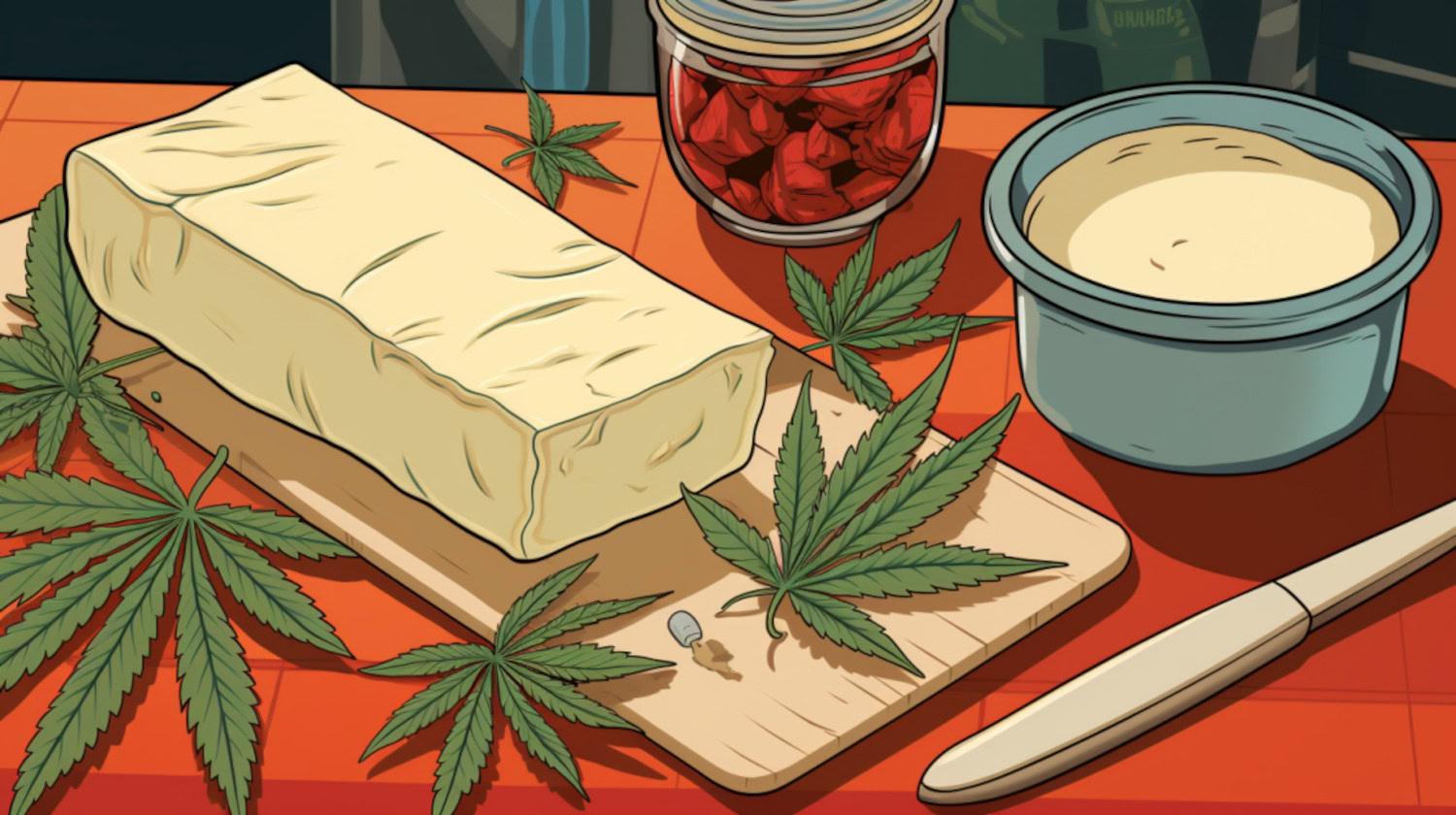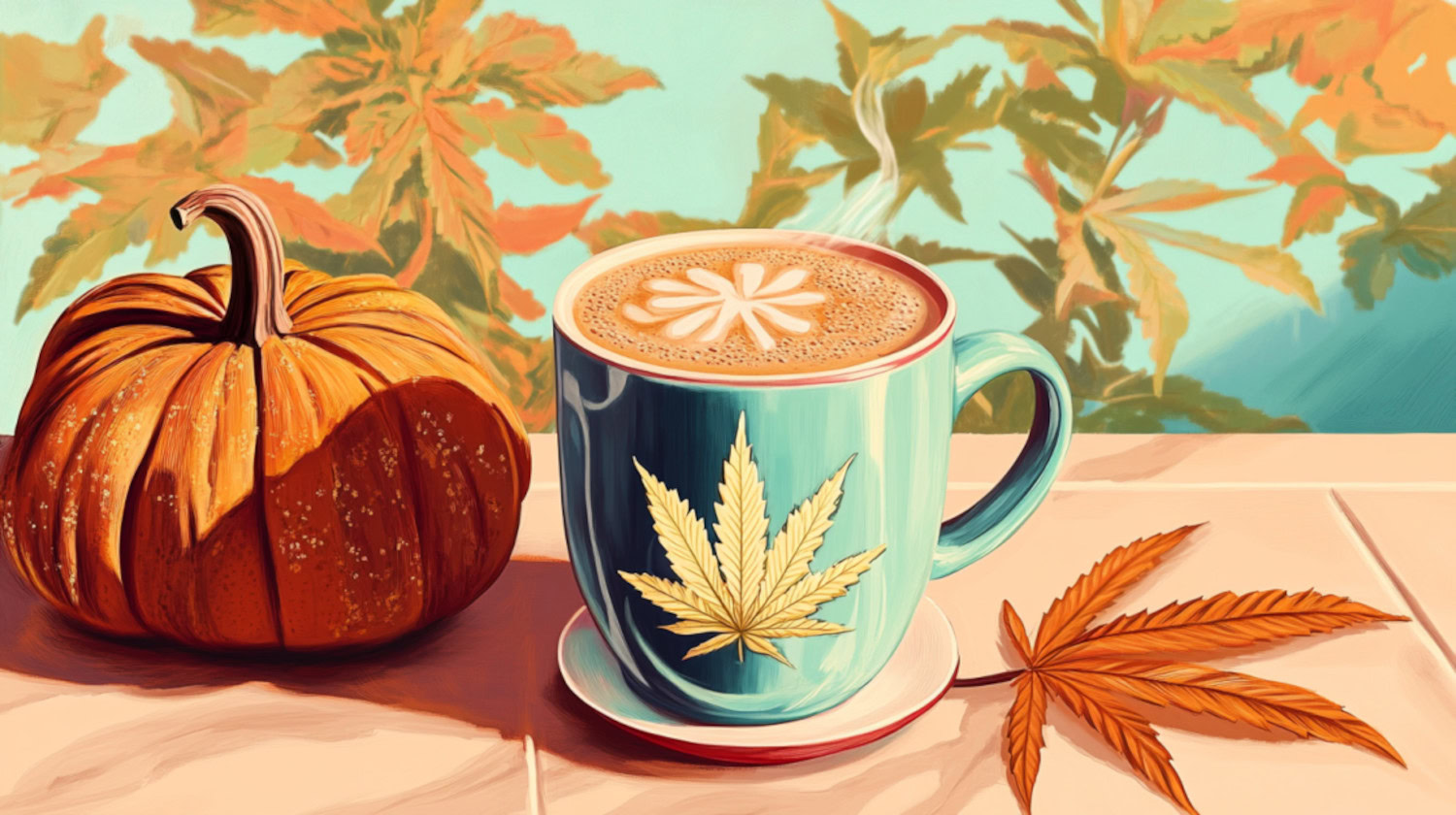In This Article
- Why Make Cannabis Infused Cinnamon Rolls?
- What You'll Need to Make Cannabis Infused Cinnamon Rolls
- How Much Weed Do You Need?
- Cannabis Infused Cinnamon Rolls: The Ingredients
- Easy Dietary Swaps
- How to Make Cannabis Infused Cinnamon Rolls
- The Best Way to Store Your Freshly Made Cannabis Infused Cinnamon Rolls
Key Takeaways
- Mix flour, sugar, yeast, and salt > Heat cannabutter and milk in a saucepan > Mix milk and butter with dry ingredients > Add egg & mix > Allow dough to rise.
- Preheat oven to 375F > Roll out dough > Butter the dough > Sprinkle cinnamon sugar on dough > Roll into a log and cut into equal pieces > Bake rolls for 15-20min > Cool and glaze.
- Store in the refrigerator for up to 3 days.
Whether you're eating them first thing in the morning or winding down after a long day, cinnamon rolls are a favorite. However, one thing that may make these gooey treats even better is cannabis.
While you might not always want to start the workday with cannabis infused cinnamon rolls, these cinnamon-sugary pastries can be a perfectly indulgent way to reap the medical benefits of the plant or just spend a relaxing night in.
You probably won't find cannabis infused cinnamon rolls at your local coffee shop, but they're simple enough to make at home that most shouldn't have a problem whipping these up in no time.
Why Make Cannabis Infused Cinnamon Rolls?
Cannabis edibles are better than smoking for many patients, and infused cinnamon rolls might offer a tasty and effective addition to the medicated menu. The effects of edibles can also be long-lasting, making it possible for patients to get the benefits of cannabis for an extended period between doses.
Consider a patient who uses cannabis to treat chronic pain, a use that often requires regular, relatively high doses of THC to provide adequate relief. Smoking or vaping cannabis would not be appropriate for such a patient in many situations. But since THC-infused cinnamon rolls can be consumed openly without raising suspicion, they can be an easy, discreet, and effective way to medicate throughout the day.
Making cannabis cinnamon rolls at home can also have additional benefits. By varying the potency of the cannabis butter used in the recipe, the home baker can make cannabis cinnamon rolls with a dose that suits their needs. Baking fresh cannabis infused cinnamon rolls can also be fun and rewarding, providing a sense of accomplishment and a connection to both the plant and the food.
What You'll Need to Make Cannabis Infused Cinnamon Rolls

Making infused cinnamon rolls isn’t difficult; most home cooks will find they already have everything they need. Basic cooking and baking supplies include an oven, baking dish or pan, oven mitts or gloves, measuring cups, a rolling pin, a small saucepan, and a mixing spoon.
The basis of cinnamon rolls with weed is cannabutter, which can be easily made at home using fresh dairy or plant-based butter and dried cannabis flower. Making cannabutter also requires basic cooking equipment and supplies, including a stovetop or hot plate, saucepan, stirring spoon, strainer or cheesecloth, and a storage container. A weed grinder is useful for grinding the cannabis flower into small pieces that will help improve the infusion of cannabinoids and other beneficial compounds into the butter.
How Much Weed Do You Need?
The amount of cannabis flower needed to make a batch of fresh THC-infused cinnamon rolls depends on the desired potency. As a general rule, a gram of cannabis flower per tablespoon of butter or oil will make an effective infusion. Using stronger cannabis or a larger amount will make the cannabutter more potent.
Dosing with cannabis edibles such as infused cinnamon rolls can be a little tricky. An edibles dosage calculator can help the home cook determine the potency of their cannabutter, making appropriate dosing easier.
Cannabis dosing is also very personal. A dose of THC that is barely noticed by one person may be overwhelming for someone else. To avoid taking too much THC, it is always best to “start low and go slow” until the effects of a particular batch of edibles are known.
Cannabis Infused Cinnamon Rolls: The Ingredients

A fresh-baked pan of infused cinnamon rolls can be made with ingredients most home cooks will likely already have.
- 2 ¾ cups all-purpose flour, plus a few tbsp extra for kneading and rolling the dough
- ¼ cup granulated sugar
- 2 ¼ tsp instant yeast
- ½ tsp salt
- ½ cup milk
- ¼ cup cannabutter, melted
- 1 egg
- 1 tbsp unsalted butter, softened
- 1 cup brown sugar
- 2 ½ tbsp ground cinnamon
Optional Ingredients:
- ¼ cup raisins
- ¼ cup chopped nuts
- Sugar glaze or cream cheese frosting to taste
Easy Dietary Swaps
The base recipe for infused cinnamon rolls can be adjusted to accommodate a vegan diet, allergies, or other dietary needs, although results may vary. Replacing dairy butter with plant-based butter in the recipe and when making the cannabutter, substituting soy milk for dairy milk, and using an egg substitute can make the cinnamon rolls vegan-friendly.
For patients with gluten sensitivities, use a gluten-free baking flour blend instead of all-purpose flour. Be aware that gluten-free dough can be trickier to work with, so you might need to adjust the amount of liquid as needed.
How to Make Cannabis Infused Cinnamon Rolls
The first step to making cannabis edibles, including infused cinnamon rolls, is preparing the cannabutter. Be sure to decarboxylate the cannabis first to activate the cannabinoids in the plant. After making the cannabutter, proceed with the following recipe.
- Combine flour, granulated sugar, instant yeast, and salt in a large mixing bowl. Set aside.
- In a small saucepan, heat the milk until warm. Add the cannabutter and mix well.
- Add the cannabutter and milk mixture to the mixing bowl with the dry ingredients and mix well. Add the egg and continue mixing until a soft dough forms.
- Transfer the dough to a lightly floured surface and knead until smooth and elastic, about five minutes.
- Place the dough in a lightly greased bowl and cover with plastic wrap or a clean kitchen towel. Put the bowl in a warm place and allow the dough to rise until it doubles (about one hour).
- Preheat the oven to 375°F.
- Punch down the dough and roll it out on a floured surface into a 12—by 8-inch rectangle using a rolling pin.
- Spread the softened unsalted butter over the dough, leaving a small (about ¼-inch) border around each edge.
- Mix the brown sugar and ground cinnamon in a small bowl. Sprinkle the mixture evenly over the buttered dough, retaining the border along the edges.
- If desired, sprinkle evenly with chopped nuts, raisins, or both.
- Starting from the long side of the rectangle, use floured hands to tightly roll the dough into a log.
- Cut the dough log crosswise into 12 equal slices. Place the rolls in a greased baking dish.
- Bake in a preheated oven for 20-25 minutes or until the infused cinnamon rolls are golden brown and cooked through.
- Allow cinnamon rolls to cool slightly.
- If desired, spread sugar glaze or cream cheese frosting evenly over the cinnamon rolls.
- For the tastiest medicated experience, enjoy the infused cinnamon rolls while they’re still warm.
The Best Way to Store Your Freshly Made Cannabis Infused Cinnamon Rolls

After cooling completely, store the cannabis cinnamon rolls in an airtight container in the refrigerator for up to three days. Carefully reheat the infused cinnamon rolls in the oven at a low temperature before serving.
Fresh, hot cinnamon rolls have been a favorite for generations, giving countless people comfort and tasty enjoyment. Making cinnamon rolls from scratch is fun and rewarding, especially when they have the added benefits of cannabis.
Baking your own infused cinnamon rolls is quick and easy, making them a perfect recipe for home cooks of any ability. Give it a try. You’ll likely find it’s a simple way to create tasty and discreet medicated treats.
The information in this article and any included images or charts are for educational purposes only. This information is neither a substitute for, nor does it replace, professional legal advice or medical advice, diagnosis, or treatment. If you have any concerns or questions about laws, regulations, or your health, you should always consult with an attorney, physician or other licensed professional.




